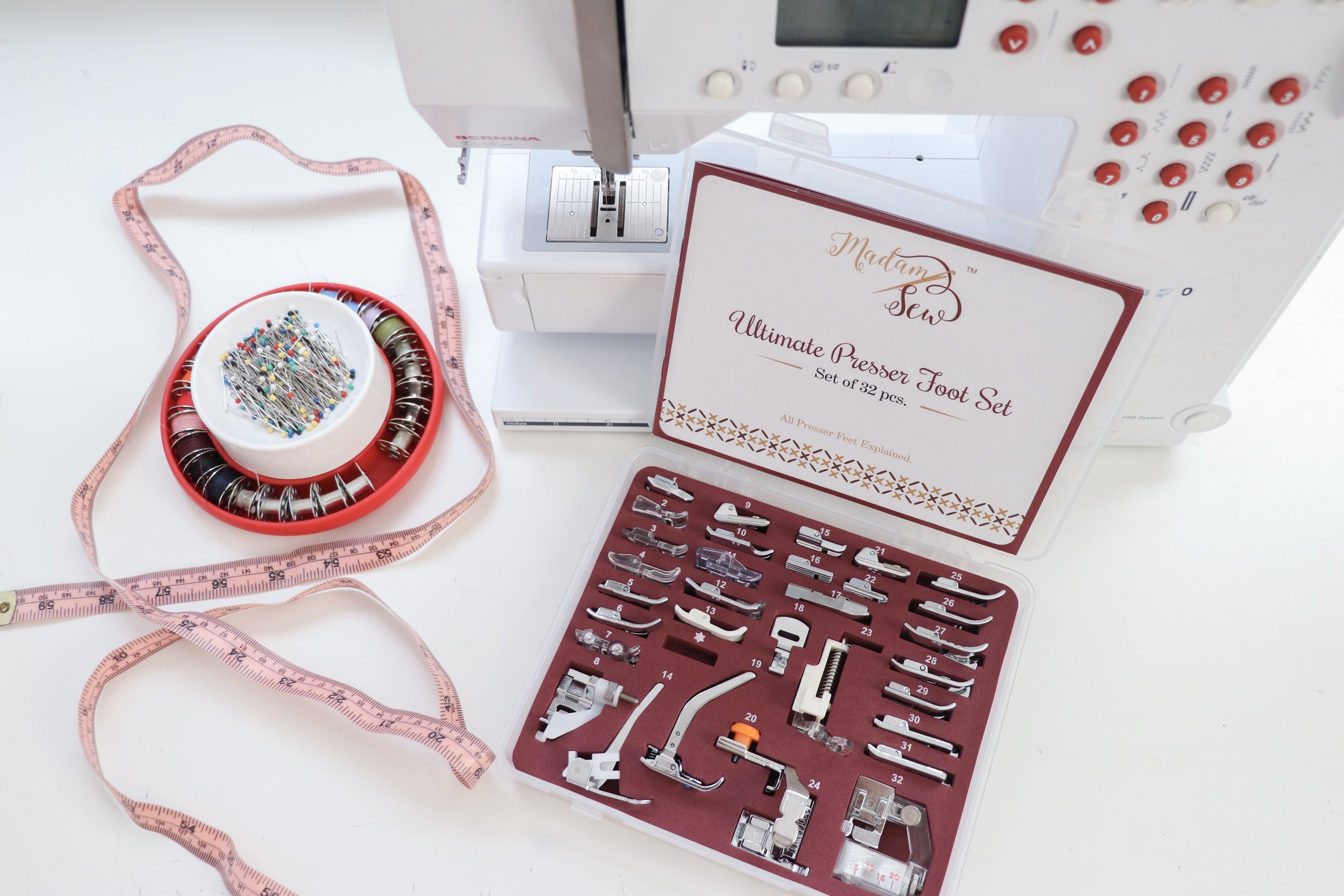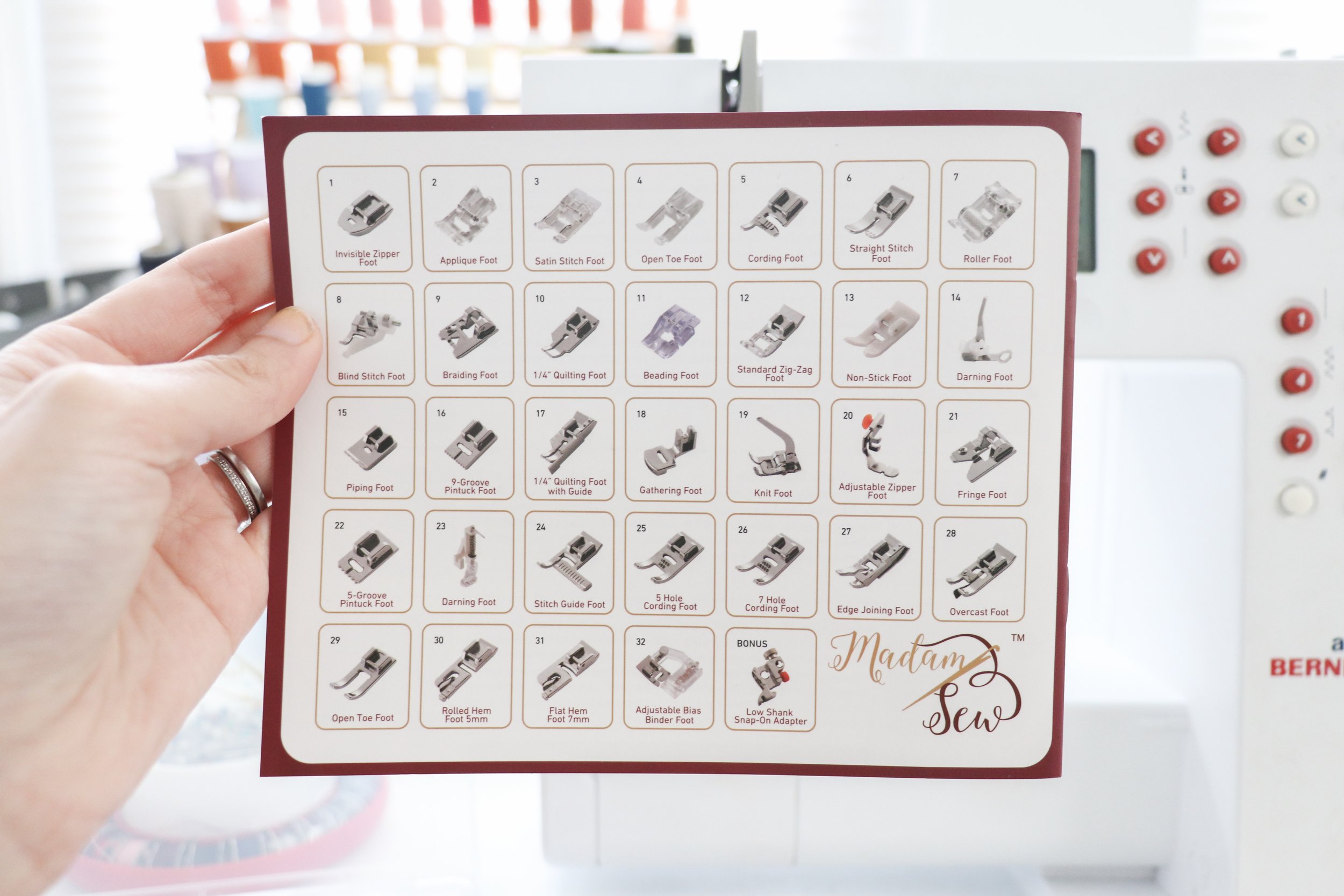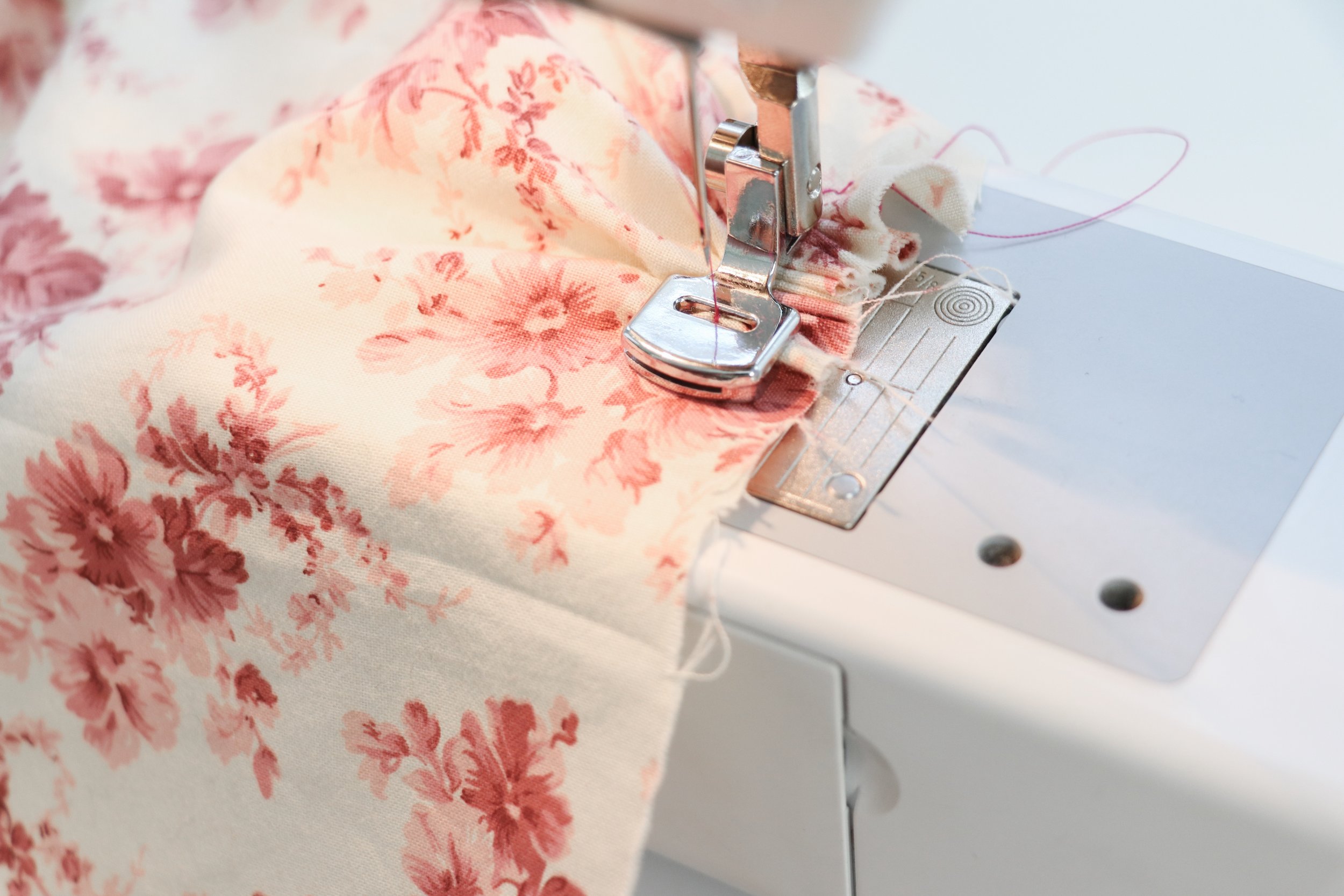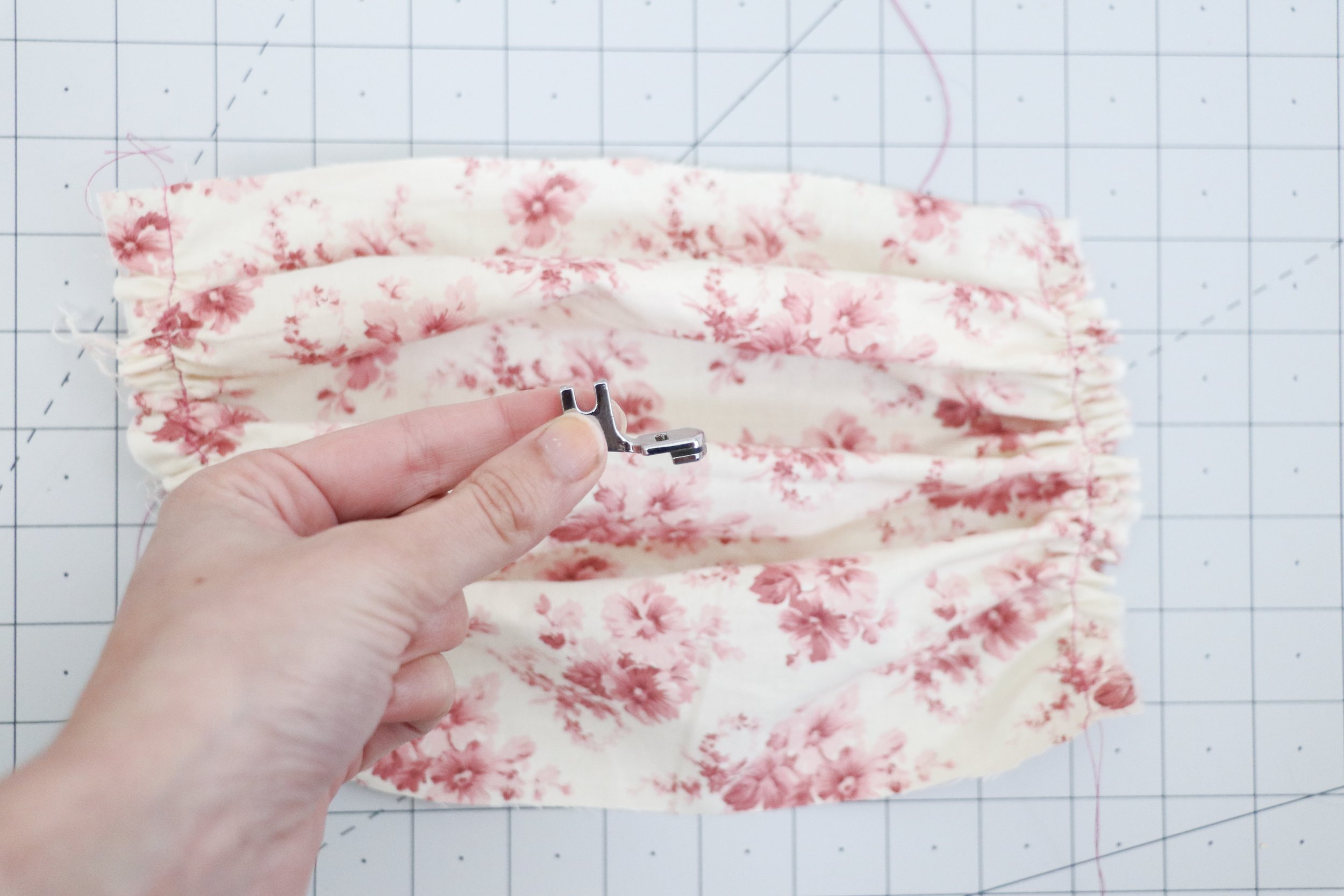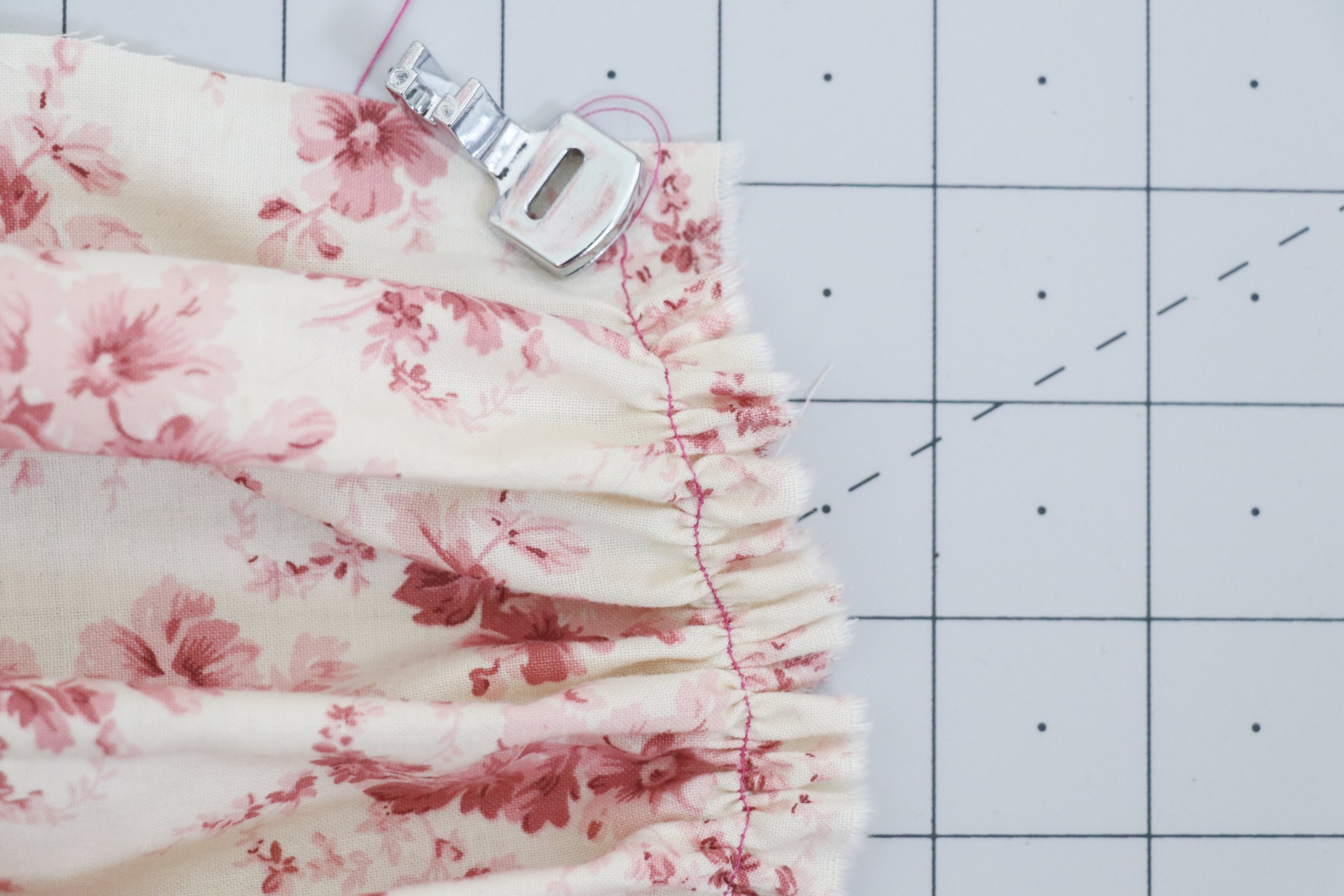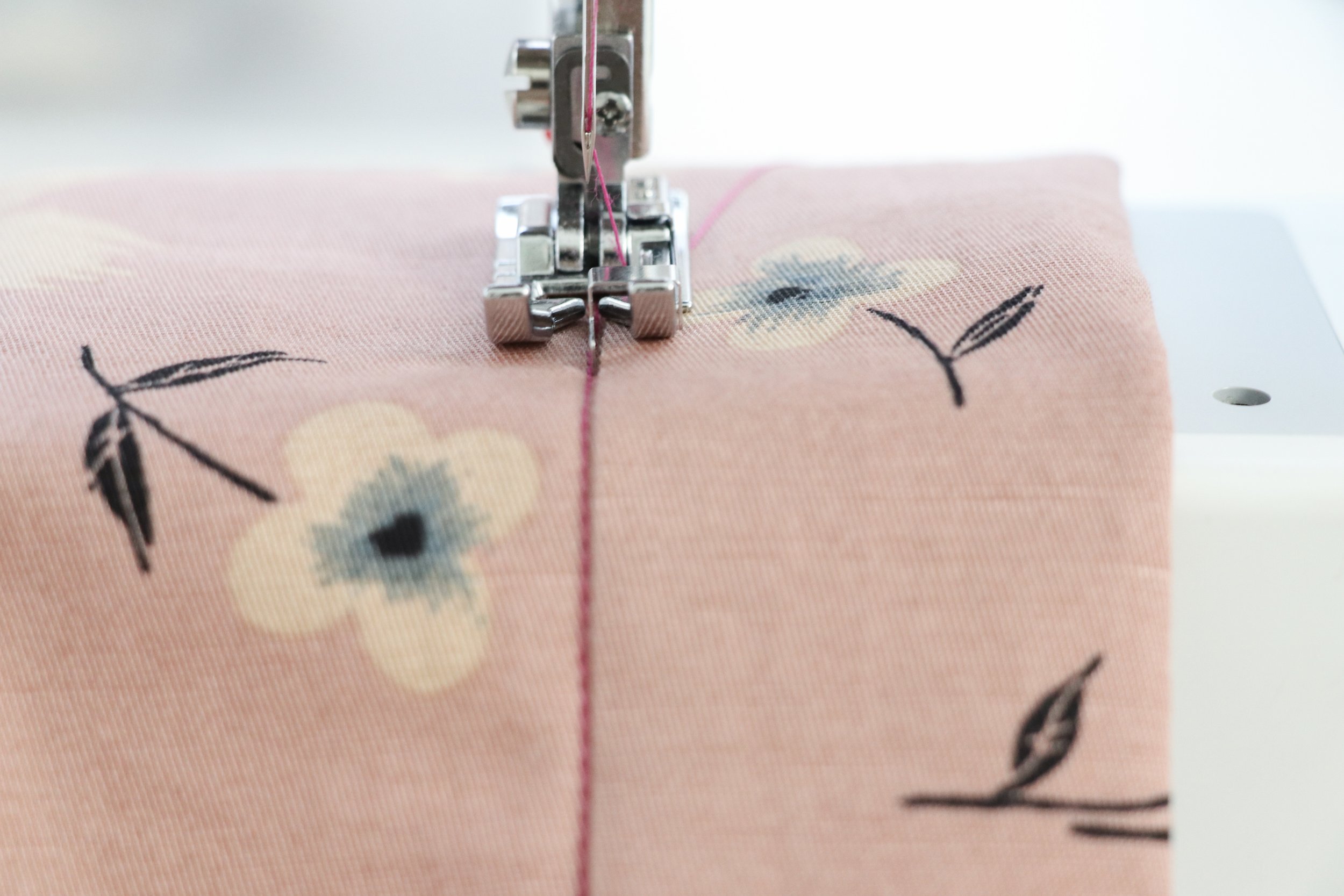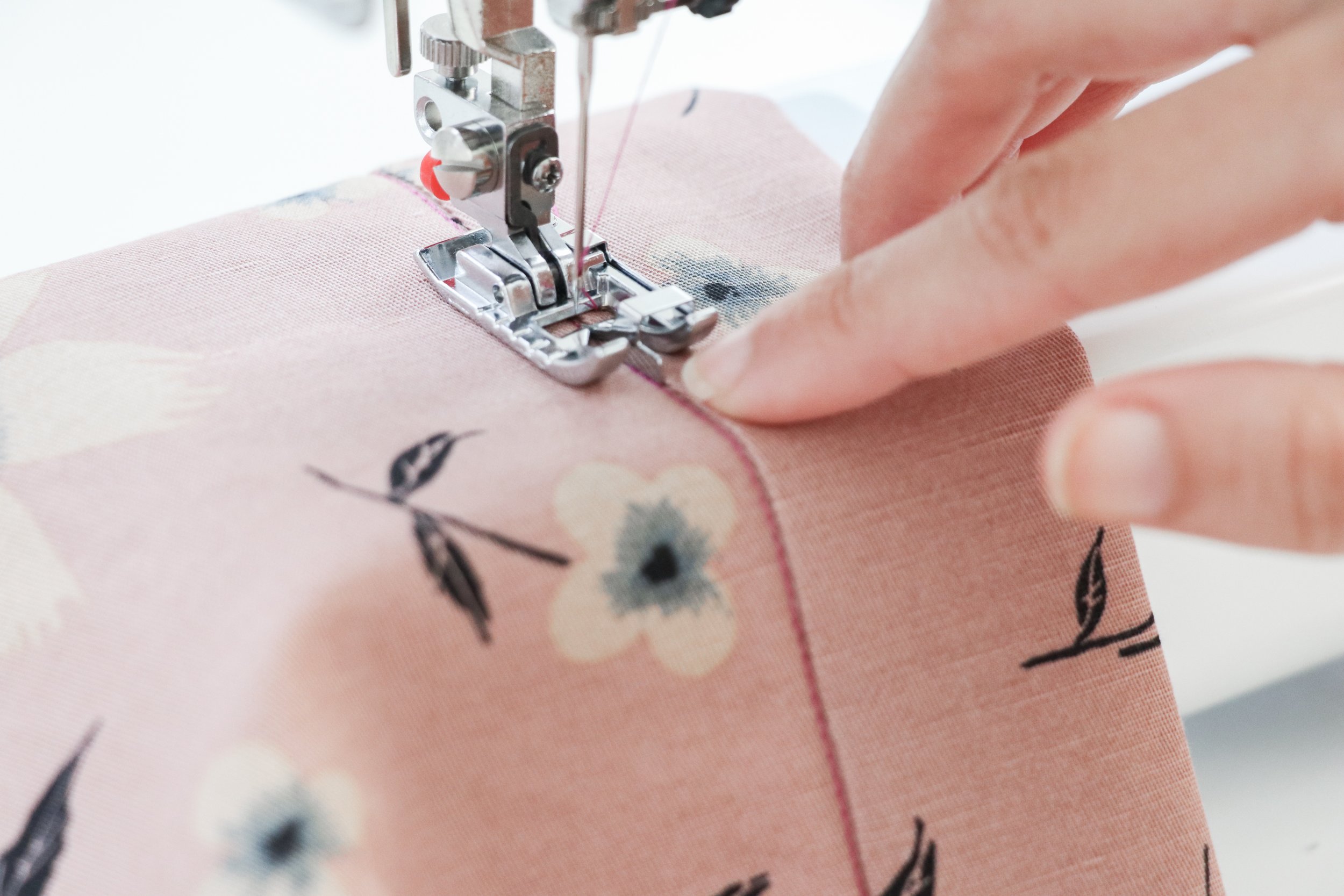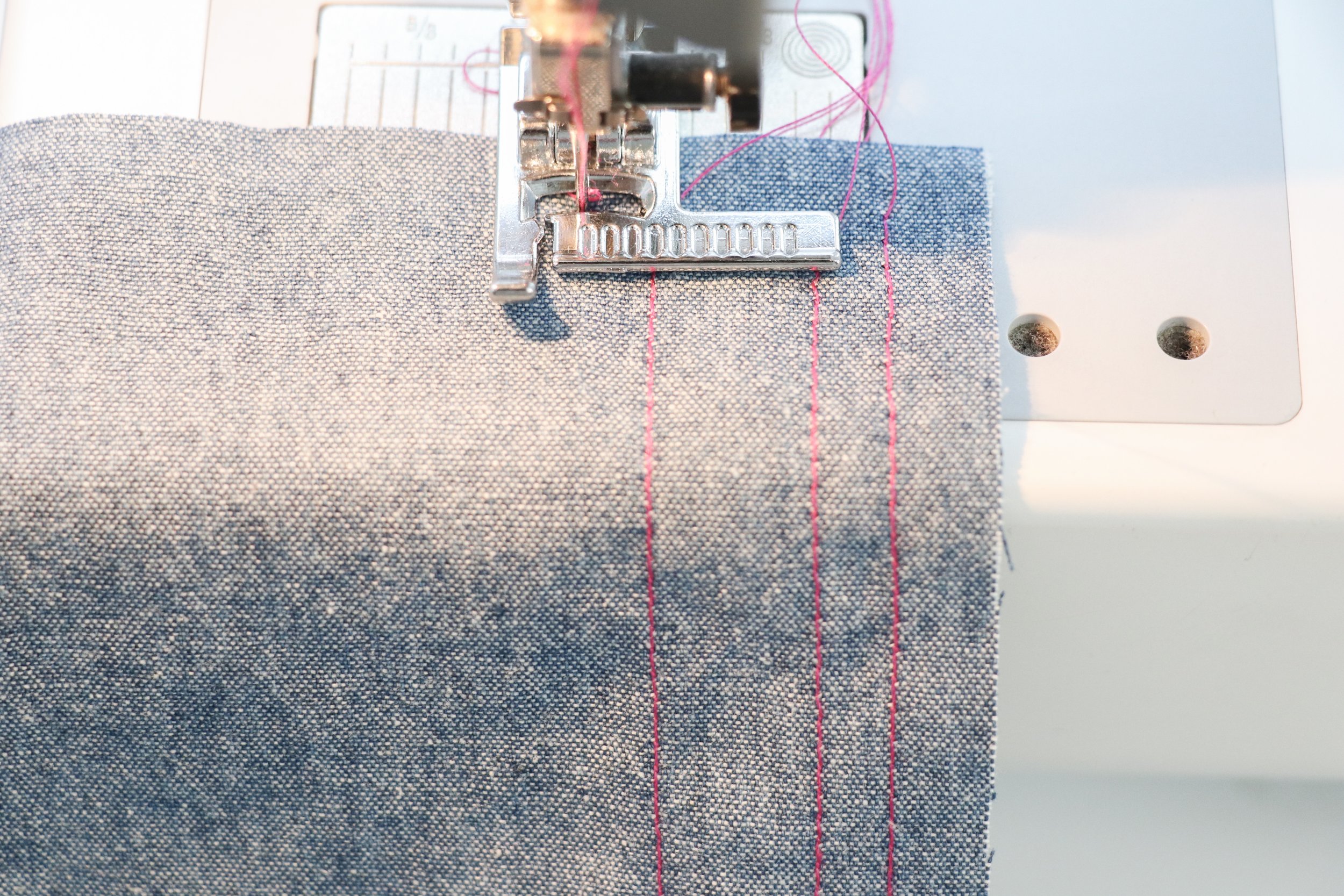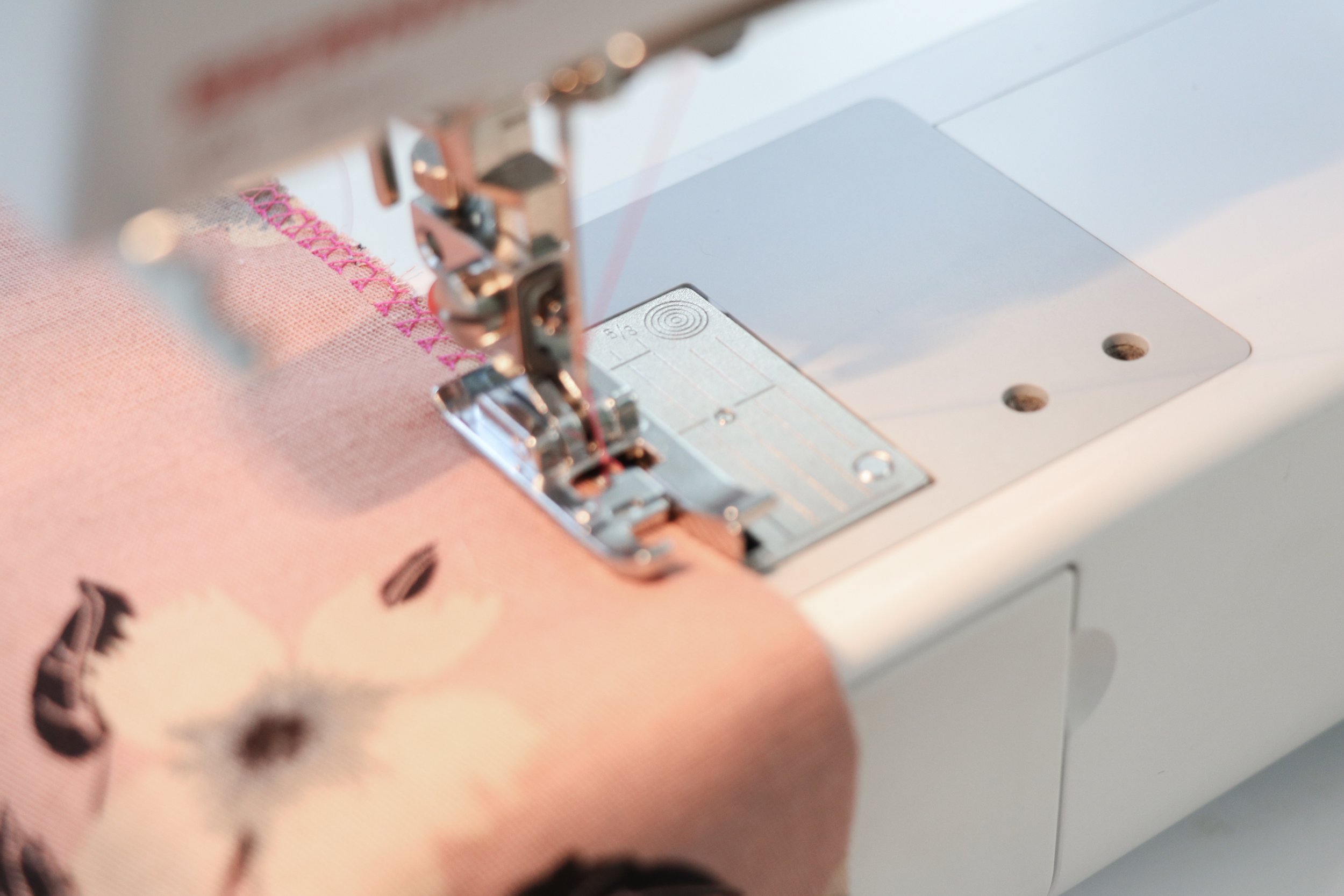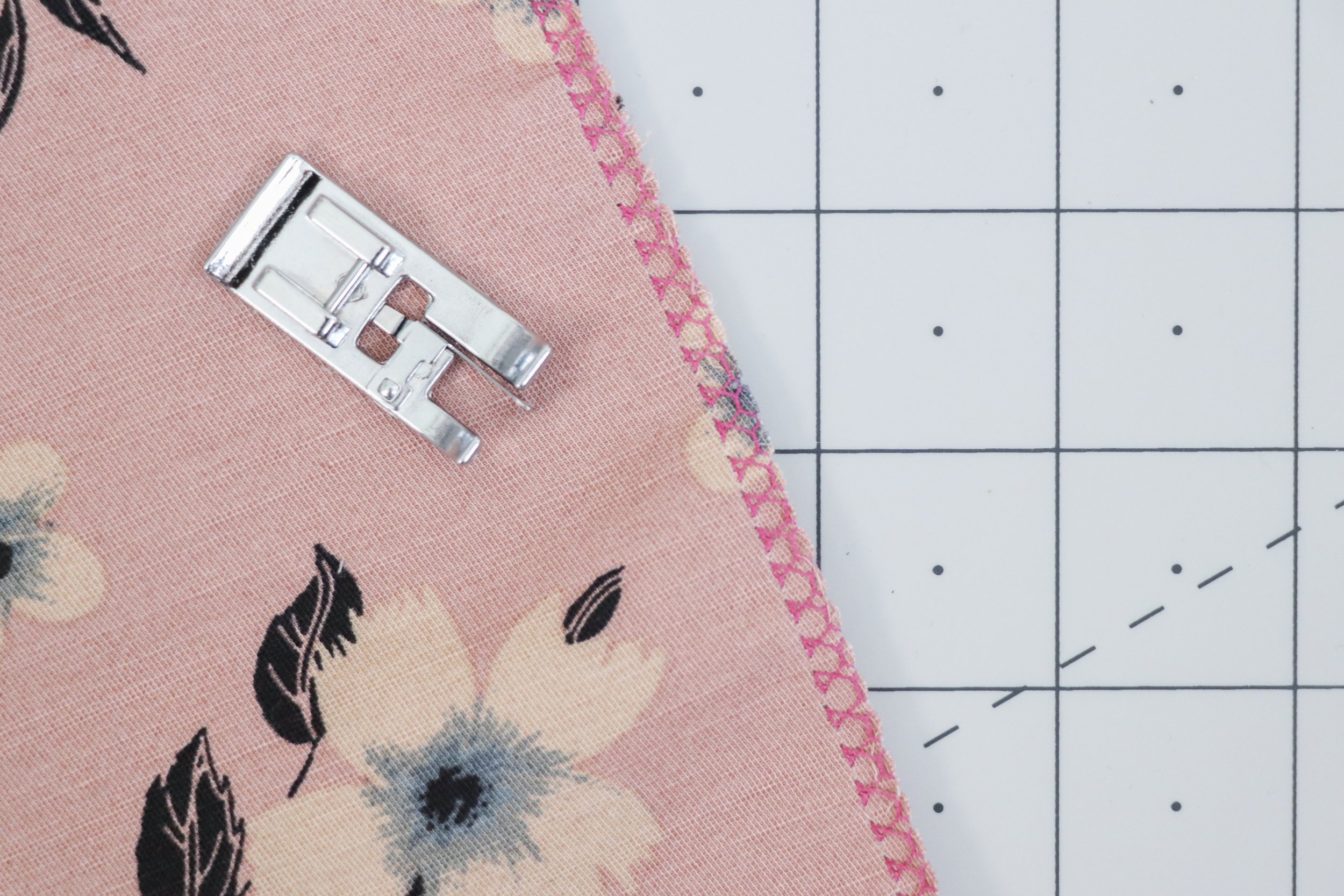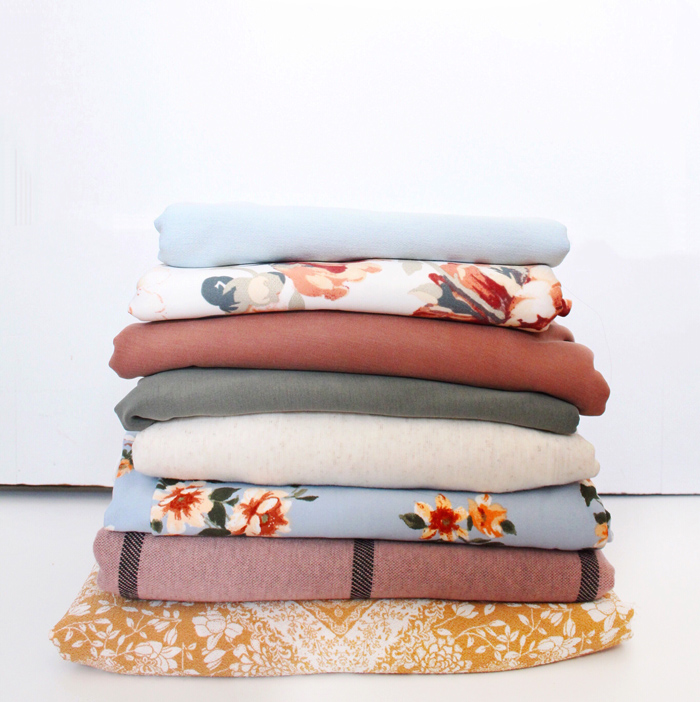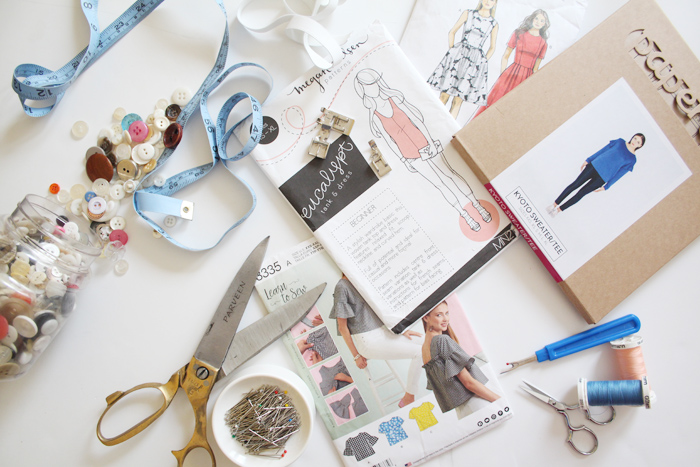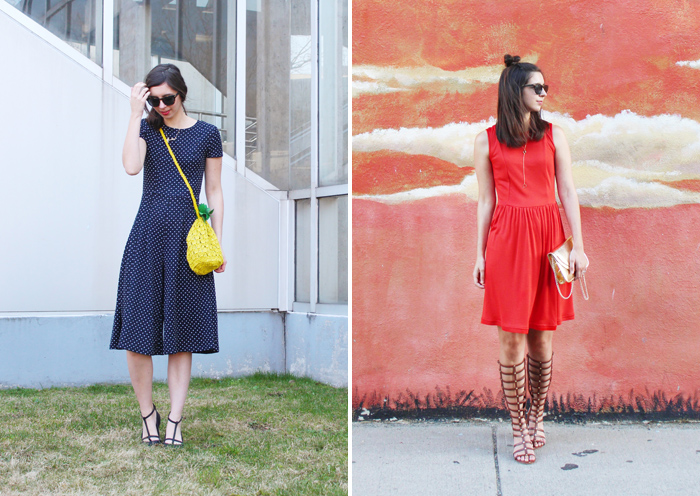I’m going to be sharing two gift guides this holiday season, for two areas that I think I know a good amount about - sewing and tiny humans! haha. Today is all about those sewists and makers. Whether you know a maker in your life that you need a fun gift for, or you yourself are a maker and need some ideas of what to ask for - here are some of my favorite ideas!
MadamSew Sew Happy Box
If you follow me on Instagram, you may have seen me sharing an unboxing of Madam Sew’s new subscription box. I mentioned during the unboxing that I think a subscription for a box or two (or more) would make a great Christmas gift! Who doesnt love a surprise box full of goodies? Each box comes with a sewing pattern, a scrap busting project/pattern, fabric, matching thread, a fat quarter of a featured fabric designer, And a handful of fun tools. In November’s box, those tools included heat erasable marking pens, a few presser feet, and a pin cushion ring. Super cute!
*** I was provided this subscription box for review and blog feature. Though, all thoughts are my own.
MadamSew Ultimate Presser Foot Kit
Another fun item from Madam Sew to gift is their Ultimate Presser Foot kit. It comes with 32 different presser feet, for any kind of application you can imagine, and it also comes with an adapter so that they can be used with almost any brand sewing machine. It comes with an instruction booklet, as well as tutorial videos for each foot.
*** I had previously received this item in the past in exchange for a review, but I actually still use these presser feet all the time! Check out my highlights on Instagram for some example videos I shared in the past. I’ll also be sharing some more video examples next week.
Megan Nielsen Mommy & Me sewing pattern bundles
Have a sewist in your life that also has a little one? Megan is offering mommy & me bundles on some of her sewing patterns that have matching mini versions, at a discounted price! Theres the Cottesloe swimsuits like I have above, the Tania culottes, Eucalypt tank/dress, and Virginia leggings.
Kylie and the Machine sewing labels
Sooooooo I really just want a stocking full of these sewing labels! Check out her website for all the different ones she offers (there are so many good ones!), and you can also find them offered at some of your favorite fabric stores - just search for Kylie and the Machine labels. The perfect stocking stuffer!
‘Maker’ necklace
I love this simple necklace! And not just for sewists - it could be the perfect gift for any kid of maker in your life. Comes in silver, too!
Scissors!!!!!
I don’t know a sewist or maker that doesn’t love collecting scissors. Both useful scissors, and pretty decorative scissors. This photo above is just a small selection of my own. But here are a few of my favorites, and some that I am coveting:
Fiskars easy action scissors - my everyday fabric scissors. I think they’re comfy to use!
Fiskars bent handle shape fabric scissors - I want to try these! Designed so the fabric doesn’t lift and remains flat when cutting



















